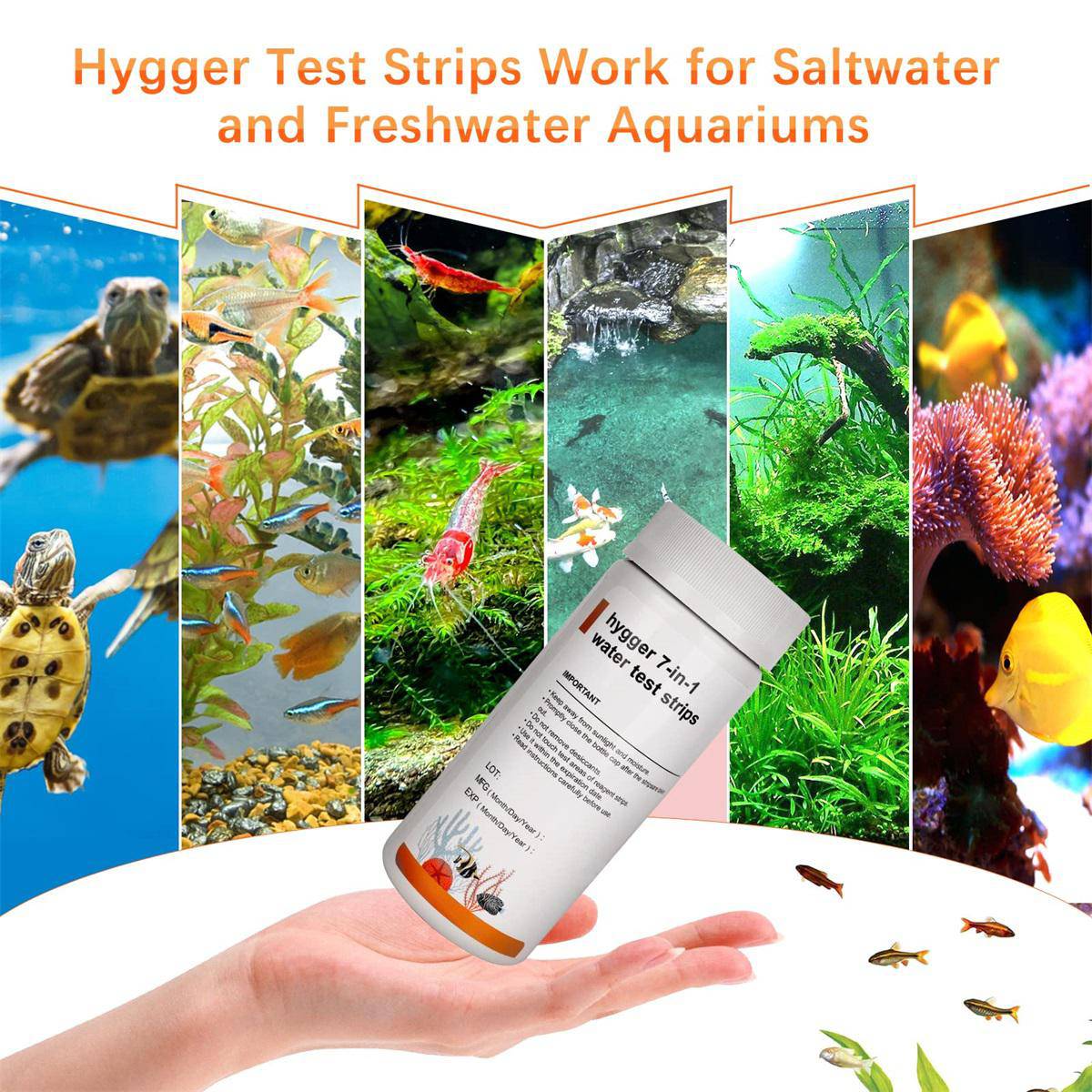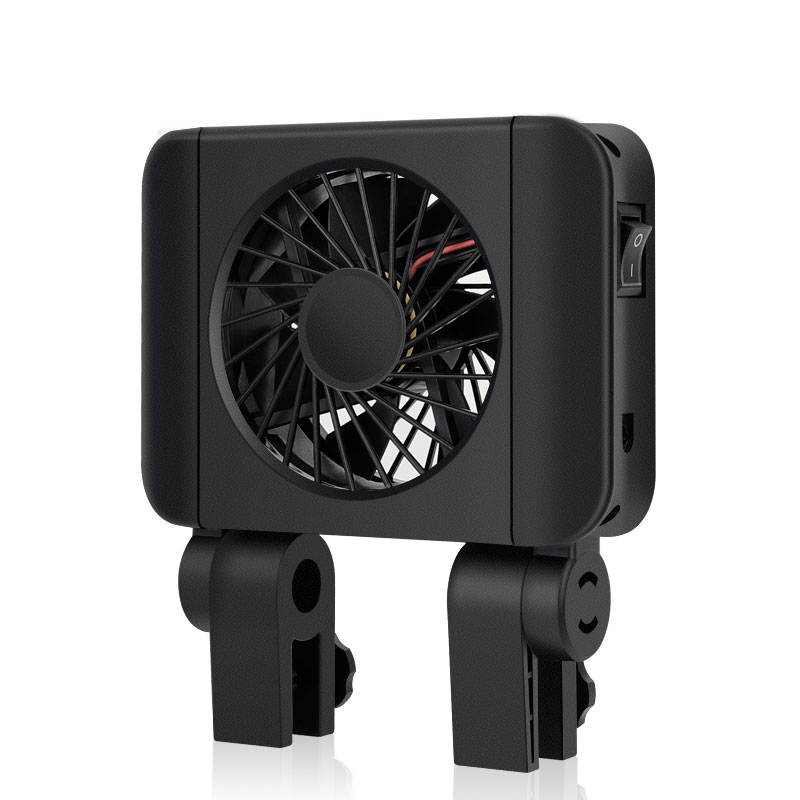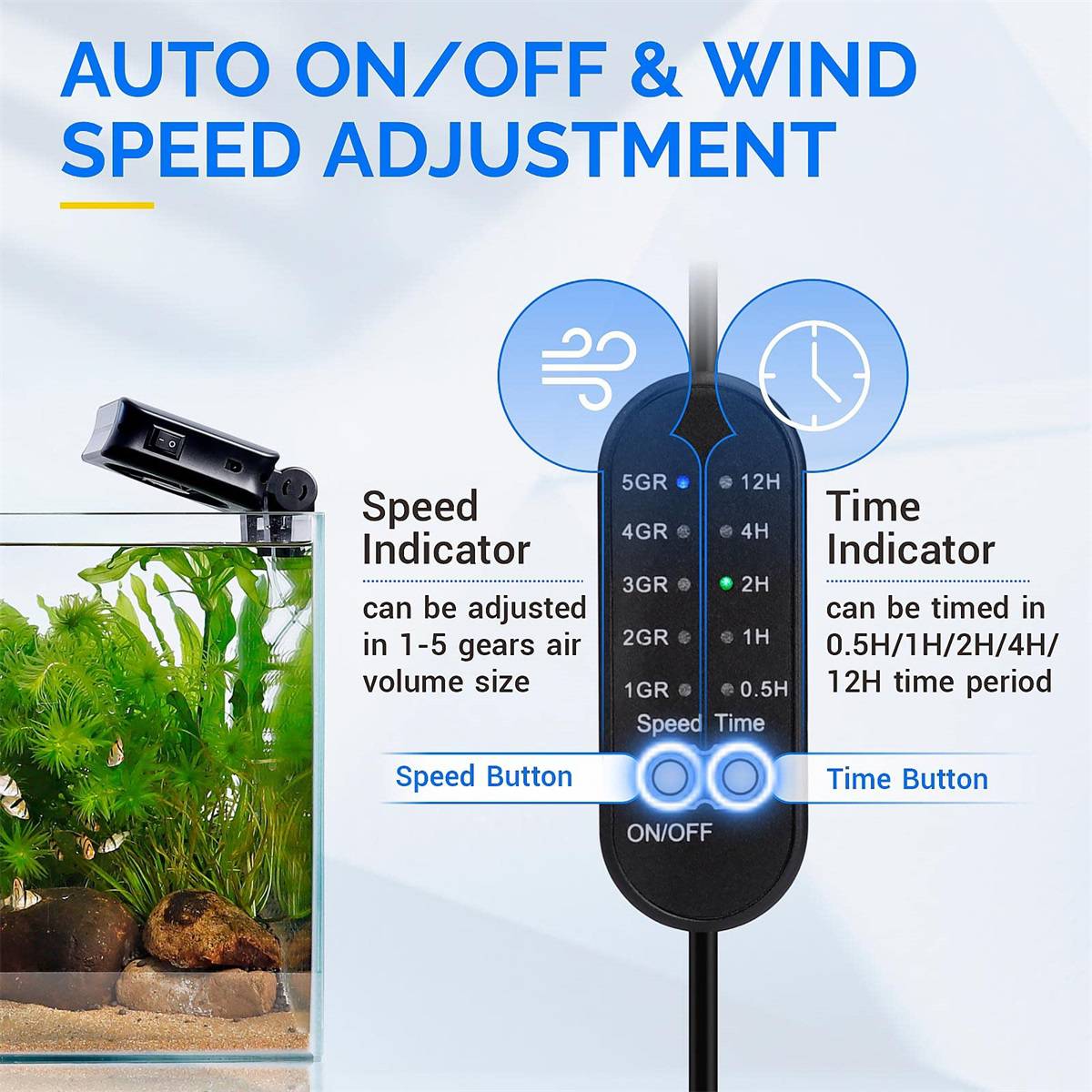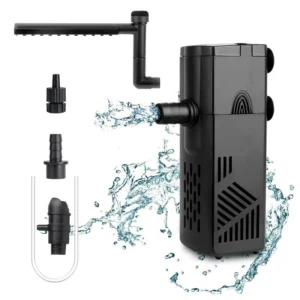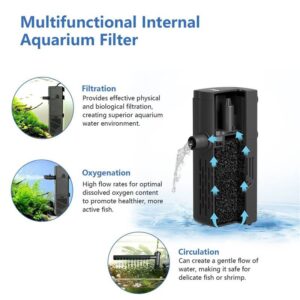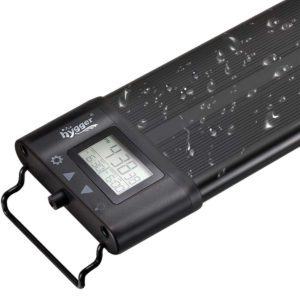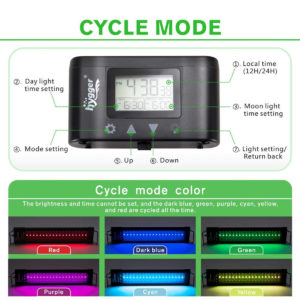How to Prevent White Spots on Fish
Now many families have aquatic pets such as ornamental fish, pearl crabs, African dwarf frogs, dwarf seahorses, snakes lizards, red-eared sliders, etc. Not only beautiful but also can improve the atmosphere of the family. Ornamental fish is the most popular aquatic pet, but many families have a common knot that the fish will have a few white patches on its body, these white patches are called white spot disease. So can these white spots be treated well or not? How to prevent it to promote fish healthy growth?
What is fish white spot disease?
White spot disease, also known as white disease, white spot disease, or cucumber disease, the pathogen is mainly water mold, and mycobacteria, parasitic on the wounds and eggs of fish, is a more common fish disease. It is one of the most common diseases in ornamental fish, characterized by fast infection, wide prevalence, and great harm, mostly occurring in late autumn and early spring, the season of low water temperature. Among them, tropical fish of the carp family and the cichlid family are more likely to be infected.
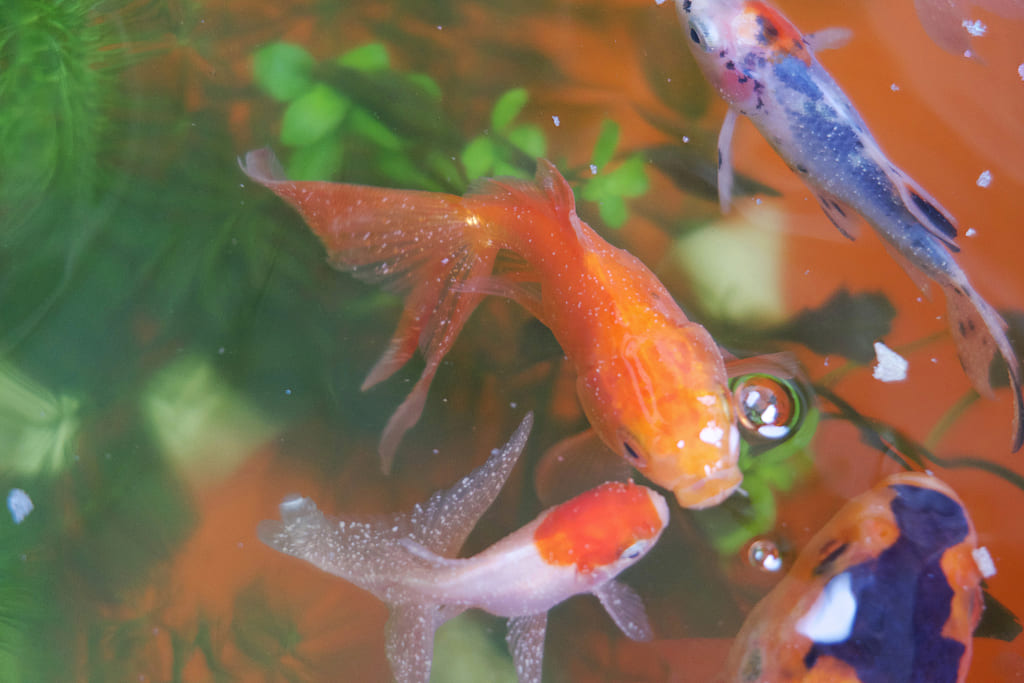
What causes fish to get a white spot?
Most ornamental fish white spot disease is caused by the protozoan cucumber worm invading the skin or gills of the fish body. Ichthyophthirius multifiliis in fish is spherical, with cilia all over its body, about 0.8 mm in diameter, as small white spots are visible to the naked eye. Ichthyophthirius multifiliis is a kind of protozoan ciliate. Microscopic examination of the adult fish has a large horseshoe-shaped nucleus in the body. Juveniles have only round, oval, or rod-shaped nuclei. The body of the worm is soft and plastic, and the morphology is variable.
At a water temperature of 18-23 °C, Cucumberworm is often parasitic on under the skin, caudal fins, and gills of fish, sucking nutrients from fish tissues and stimulating the fish to secrete a lot of mucus, thus forming a white pustule on the surface of the fish and spreading all over the body. When tropical fish suffer from this disease, the white spots appear on the fins first, and the fish appear to be sluggish, floating on the water’s surface, and rarely moving.
The pathogen of grouper white spot disease is the grouper flap body worm of ciliate. The worm is tiny, slightly transparent, and similar to the freshwater carp slant tube worm, size 45-80 × 29-53 microns. The ventral surface of the worm has 32-36 ciliate lines, the rest is exposed, and there is a round cell mouth in the middle of the anterior part, a large oval nucleus in the middle of the worm, and a flower-like petaloid body behind the large nucleus. It is characterized by rapid onset and great infectivity.
The cause of the white spots is mainly the fish body injury, scale-off, etc., resulting in the invasion of germs into the wound. In fishing, transportation, fish trauma or parasites cause the fish skin injury after the invasion of Mycobacterium spores and thus infection, so it should be careful not to cause fish body injury.
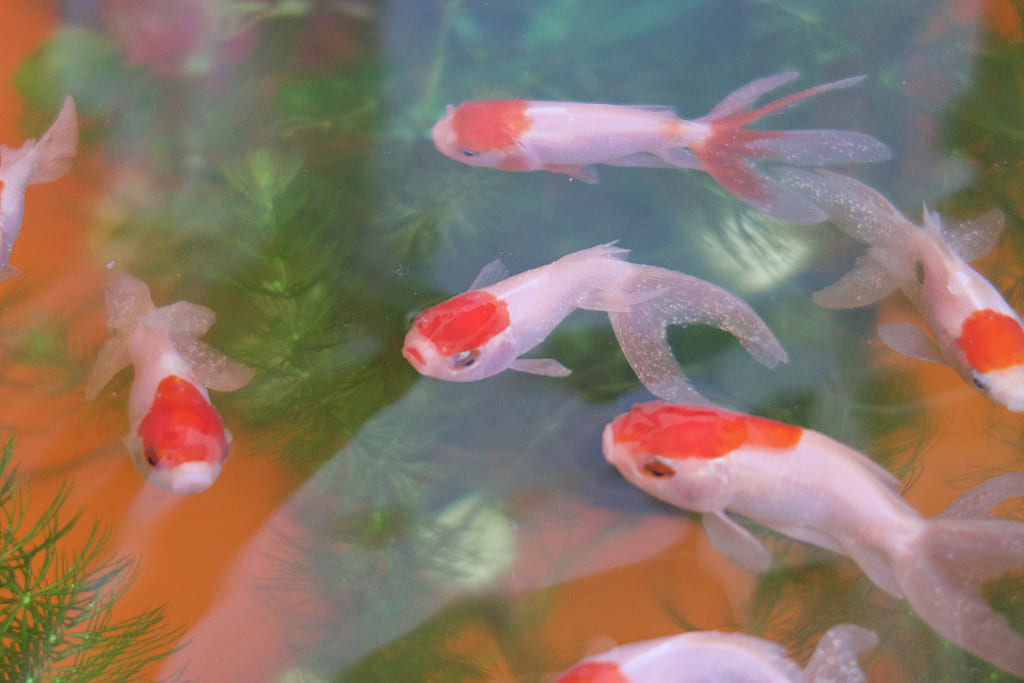
The symptoms will appear when fish become ich fish
Initially, fingerprint-like red or pale red patches appear on both sides of the fish body, and can also occur on the head and tail, with a slight elevation at the lesion site. At the beginning of the ich fish symptoms, the pectoral fins, dorsal fins, caudal fins, and body skin have white spots scattered, although the sick fish are feeding, as usual, often gathered in the corner of the tank to rub each other. The sick fish would rub their bodies against hard objects, hoping to remove the nasty pathogens from their bodies.
After a few days, the white spots are all over the body, and the ich fish often float on the surface in a sluggish state, and the serious ones seem to be sprinkled with white powder all over the body, which happens mostly in spring, autumn and rainy season, especially in the lack of aquarium lighting, low temperature and under the tail of live bait. With the continuous deterioration of the disease, the lesion turns into white patches, the lesion part of the scales gradually relaxes, easy to fall off, the scales fall off to reveal a clearer white spot.
The fish body grows “white hair”, grayish white, Mycelium, and wound cell tissue entanglement adhesion, so tissue necrosis. At the same time, the ich fish lose their appetite and finally die. The disease can occur all year round. Generally speaking, sick fish have no appetite and the mortality rate is up to 90%.
White spot is infectious quickly in a school of fish, and if not treated in time will be the second infection combined with water mold and bacterial infection, in serious cases, if the drug is ineffective, there will be a large number of fish deaths. So early treatment is necessary.
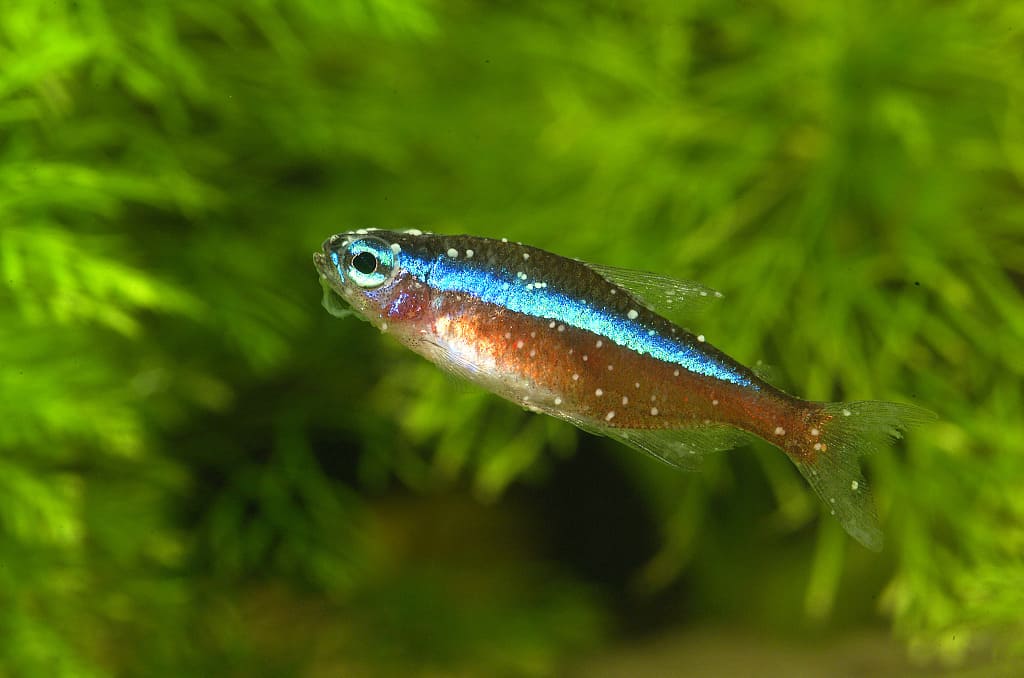
Effective measures to prevent fish white spot
1. Raise the water temperature to 32 degrees Celsius(for tropical fish).
Prevention of ich only needs to pay attention to maintaining a water temperature of 25 ℃ or more. Because the Cryptocaryon irritans Brown does not tolerate high temperatures, generally above 25 ℃ will stop developing, when the water temperature rises to 28 – 30 ℃, it will die naturally. Therefore, for tropical fish suffering from white spot disease, the treatment is not too troublesome. Just take out the fish first then maintain the water temperature at 28 – 30 ℃, after a week, all the cysts on the body surface of the fish will be shed. If this is supplemented with drug treatment, the effect will be better.
When treating with medicine, you can use 0.1ppm of nitrite or 0.5ppm malachite green solution in the tank to wash the sick fish for 2-3 hours. When the symptoms of the ich fish disappear, we should replace new water in time to avoid mercury poisoning of the fish for too long.
The introduction of new fish first with potassium permanganate solution, or saltwater-soaked disinfection before putting them into the fish tank, is generally able to eliminate the occurrence of white spot disease. A weakness of the parasite Cryptocaryon Irrintans Brown is that it cannot tolerate high temperatures. Try raising the water temperature to 32 °C and adding some drug treatment, and that should get rid of 90% of the parasites.
For Early treatment, if the treatment is timely, the cure rate can reach 100%. Soak with 1% salt water or gentamicin for about 15 minutes, once a day for several days. Or use two parts per million (2 ppm) of methyl blue solution, and soak for 6 hours a day; or soak with two parts per million (2 ppm) of Guinness hydrochloride solution at 28 – 30 ℃ for 3~5 days, both can achieve good results.
2. Stay in the fish tank water for at least 2-3 days
When changing water, you should pay attention to the temperature difference, if it is too large, resulting in fish “cold”, disease, and insects taking advantage of the weakness of the fish body. Make full use of the weakness of the Cryptocaryon irritans Brown which can die on its own if it can’t find a host in 24 hours, the water for freshwater fish should be exposed to the sun or left for 2-3 days before use. This is one of the best ways to prevent cucumber worm disease.
How to treat ich fish or how to reduce the symptoms?
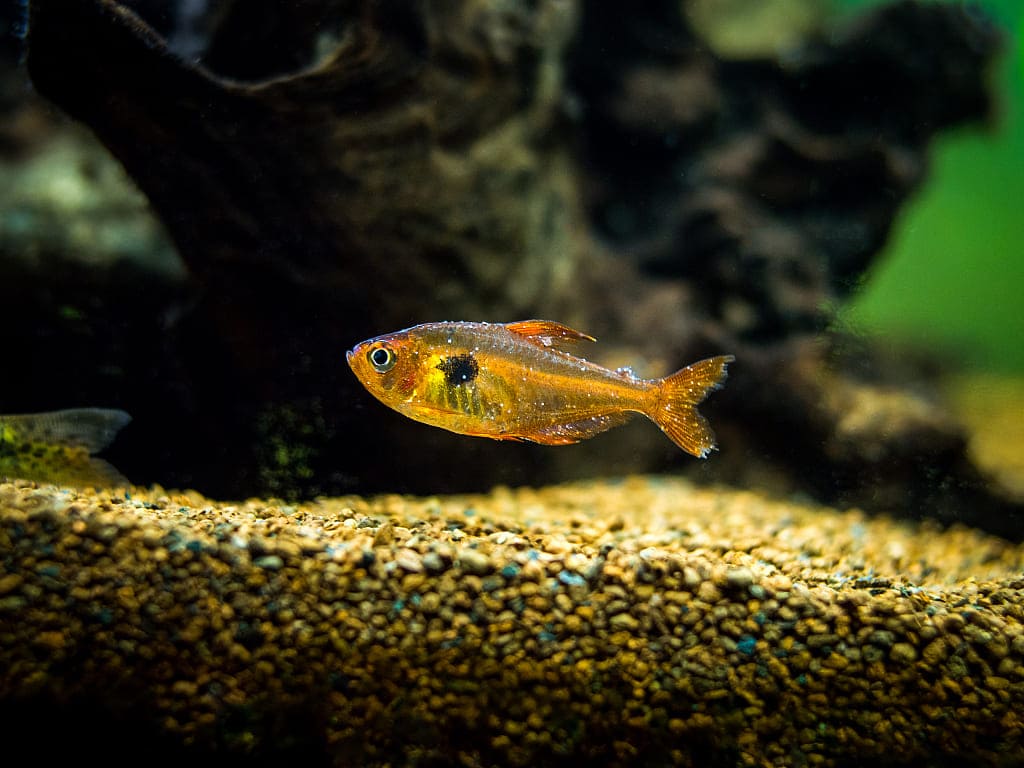
Ich fish treatment method:
Physiotherapy:
When stocking new fish in the aquarium, can put a small amount of salt to inhibit the occurrence of water mold, if you put live bait, pay attention to clean disinfection. Keep water quality clean to isolate the growth of water mold bacteria. Generally can prevent the occurrence of this fish disease.
- A.Splash 250g of salt plus 250g of baking soda mixture on a 100cmx55cmx45cm fish tank, insist on several times, the effect is remarkable.
- B.Dissolve 0.3g of malachite green or hypo-methyl blue in 100kg of water, dip and wash the fish body for 10-20 minutes, the mycelium will be seen to fall off after a few days.
- C.2%-3% salt water dip washing, once a day, 5-10 minutes each time.
- D. Two parts per million (2ppm) of potassium permanganate plus 1% of brine mixed with the sick fish will be soaked for 20-30 minutes.
- E. Increase the water temperature to inhibit the growth of water mold. A 15-watt ultraviolet lamp can be used for several hours a day to effectively inhibit and destroy the water mold bacteria.
Treatment drugs:
- A. With a 5% saline immersion for several days
- B. With a solution of methyl blue at 2 parts per million (2 ppm), soaked for 6 hours a day.
- C.0.05 parts per million (0.05 ppm) of malachite green and 25 parts per million (25 ppm) of formaldehyde solution mixed treatment, the efficacy is better.
- D.Soaked with a solution of 2 parts per million (2 ppm) of guanine hydrochloride at 28 to 30 °C for 3 to 5 days.
- E.Soaked with 2 ppm (2 ppm) of mercurous nitrate solution for 30 minutes.
- F.or with 50 to 70 parts per million (50 – 70ppm) concentration of red mercury solution soaked for 5 – 15 minutes, 2 times a day to treat to disappear after the white spots, still need to use the drug for some time so that the unattached fish cucumber worm death.
Conclusion
One of the most effective measures for preventing white spot disease in freshwater is to use an antiparasitic treatment. The most effective treatment is known as Brooklynella. This protozoan is most often associated with clownfish but can affect other species of fish as well. The infected fish exhibit cloudy skin and heavy respiration. Acute outbreaks of the condition can lead to a fish’s death.
There are a variety of symptoms associated with these ich fish. Your fish may show irritation, decreased activity, and decreased appetite. Though the disease is generally not fatal to a fish, trained aquaculturists can recognize it before it causes significant damage. In some cases, the white spots are not visible to the naked eye. The gills will be pale. However, white spots are not always indicative of a problem.
If the disease hasn’t affected your fish, try raising the water temperature. The water should be at 86 degrees F and maintained for at least 3-5 days. Aside from raising the water temperature, another effective way of curing white spots is to increase the oxygen level in the aquarium. You can do this by adding air stone to your tank or by adding copper to the water. If you cannot get a reliable solution, you can buy some commercial products that do the trick.

